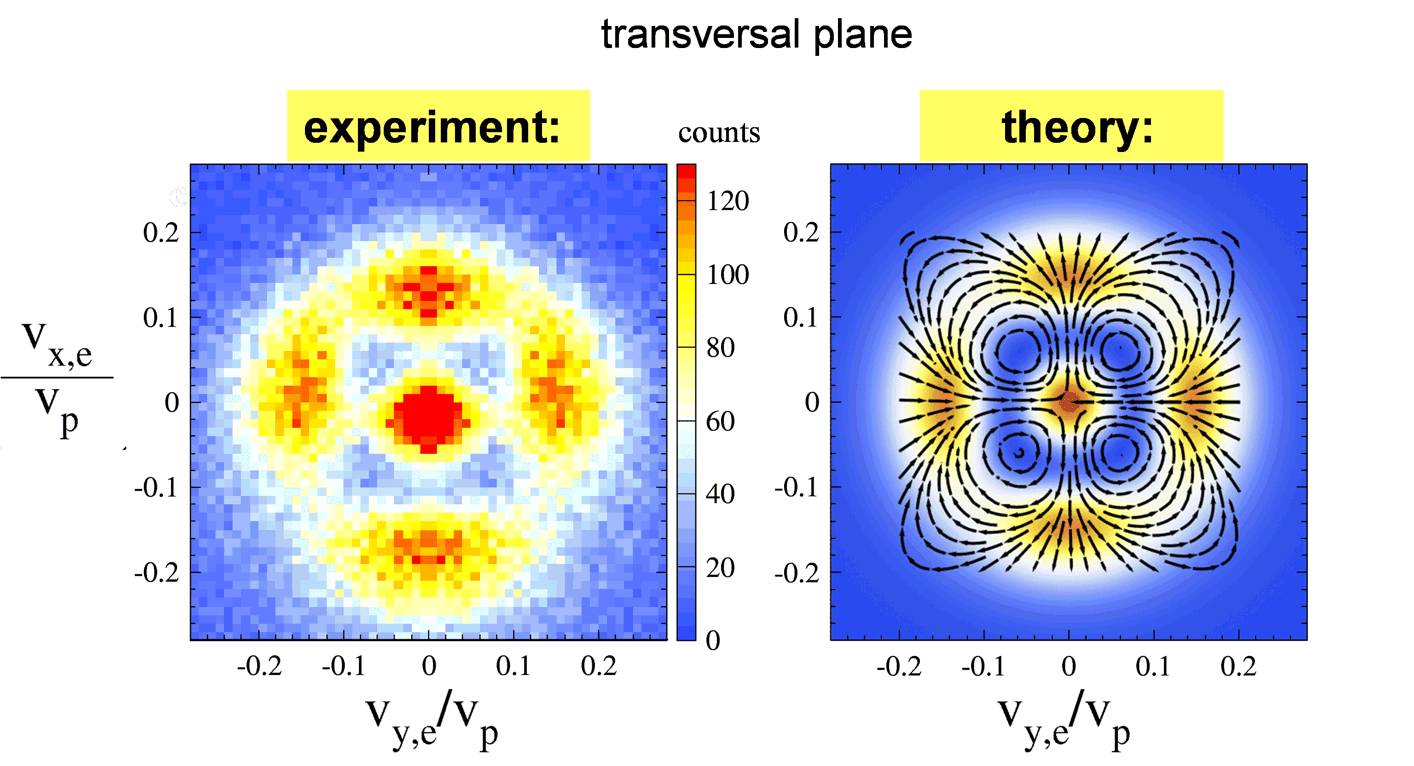Vortices associated with the wavefunction of a single electron emitted in slow ion-atom collisions
|
The time dependent Schrödinger equation of a single electron at the potential of two nuclei moving at a classical trajectory can be solved at a regularized lattice (RLTDSE). The free electron wave function shows vortices, which are lines with zero probability density surrounded by a flux. We did a kinematically complete measurement of the reaction 10 keV/u He2+ + He → He+ + He2+ + e- by using COLTRIMS in order to proof the existence of the vortices. They should show up as local minima in the electron momentum distribution. In contrast to the theoretical predictions, which had been available prior our measurements, we found those minima not in the scattering plane but in the plane perpendicular to the direction of impact. To reproduce these findings, our coworkers from the Universities of North Texas and Tennessee developed a new theoretical approach. In the first step it describes the correlated 2 electron wave function by quasi-molecular states of He22+ and the system is propagated to intermediate internuclear distances by the hidden crossing method (2eHC). This provides amplitudes as a function of the impact parameter, which can be converted into a scattering angel dependent wave function of a single active electron. This is propagated to infinity by RLTDSE.  The figure shows the transversal electron distribution for large scattering angles of 2.25 - 3.25 mrad with the projectile being scattered downwards (negative x axis). Electron velocities are scaled to the projectile velocity (vp=0.63 a.u.). In the theoretical spectrum (right), the quantum mechanical flux is visualized by the arrows. The 4 local minima result from a superposition of two quasi-molecular states: 2pσ, which has a circular node and 3dδ, which has nodes on the diagonals. These two states are superimposed with a relative phase of 90°. At small scattering angels the electron emission pattern indicates a major contribution of 2pπ with a smaller contribution from 1sσ as it has been observed several times before. Only these two states can efficiently be populated by dynamical couplings of single electron quasi-molecular states. However, with the improved statistics and resolution of our experimental results we see the higher angular momentum contributions also for other regimes of scattering angles or other impact velocities. But they all look different because the relative phases of the quasi-molecular states considerably change with these parameters. Publications Vortices Associated with the Wave Function of a Single Electron Emitted in Slow Ion-Atom Collisions |